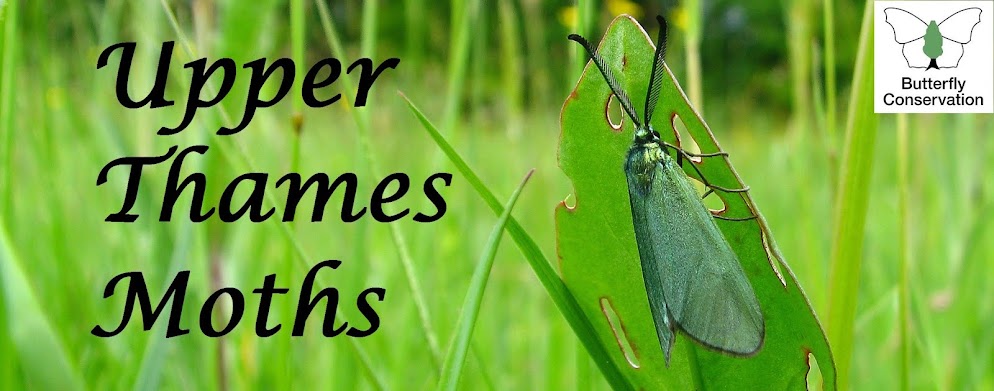Friday 1 February 2019
Merton Moths 2018
I’ve
been trapping for about 20 years in my garden which is quite large, in a rural
location, backing onto pasture. This area is pretty low lying, prone to
flooding, but obviously much drier in 2018. I usually run a 125MV Robinson trap
once a week for the Garden Moth Scheme and then trap on another night in
between. I only trap from the beginning of March to the end of October when I’m
at home. I have to run the MV trap up close to the house, where it can be quite
windy, to avoid disturbing neighbours. I’ve started using 6W Heath traps for
the ‘in-between’ nights as I can move them around in the garden and put them in
more sheltered spots. The garden has quite a lot of hedge, shrubs, fruit
bushes, some poplars, horse chestnuts and a couple of small apple trees, plus two small ponds. 2018 was a better year compared with the previous few
years but comparisons are not that straightforward. Prior to 2013 I kept
records on paper, mainly focused on number of species. I’ve yet to find the
time to total up the individual moths trapped, but have the impression that
overall numbers have greatly declined since I started (using only a Heath trap
for the first 10 years), though variety of species has not. In 2018 I ran the
MV trap 35 times and the Heath traps 31 times, total, 64. This is more than the
next highest number of trap nights, since starting electronic personal records, of 55 nights in
2013 (all MV). I have been interested to see if different species come to traps
in different parts of the garden and different types of lights. I don't think I can say anything definite as yet. I wonder what other people have found? Overall
I trapped 240 species in 2018, compared with 225 in 2017, 3920 individuals,
compared with 2574 in 2017. There were 9 new macro moths (not previously
trapped since 1998) including personal highlights such as Clifden Nonpareil and
Dark Spectacle as well as December Moth and L-Album Wainscot and a number of
new micros. Agriphila geniculea and
the Setaceous Hebrew Character topped the list with 264 and 262 individuals
respectively.
Subscribe to:
Post Comments (Atom)

Hi Linda, thanks for posting this. It is always worth experimenting with moving traps around to try and find a better position and, as you say, it can vary depending on the weather as somewhere relatively sheltered will normally be best. I haven't yet had a chance to sit down and work out which species came to which type of light in my garden (a job I'll get around to eventually)but from memory a few did seem to show a preference when both traps were run together. For example I think I had many more Large Yellow Underwings to the actinic than came to the MV. Glad to see you got L-album Wainscot as that's been on my watch-list for a couple of years and your sighting is the closest yet to me that I've heard of!
ReplyDeleteHi Dave
ReplyDeleteThe obvious moths that I’ve only found in an actinic so far have been Red Underwing and Old Lady. But then it could related to where the trap was.... too many variables! Will keep experimenting!